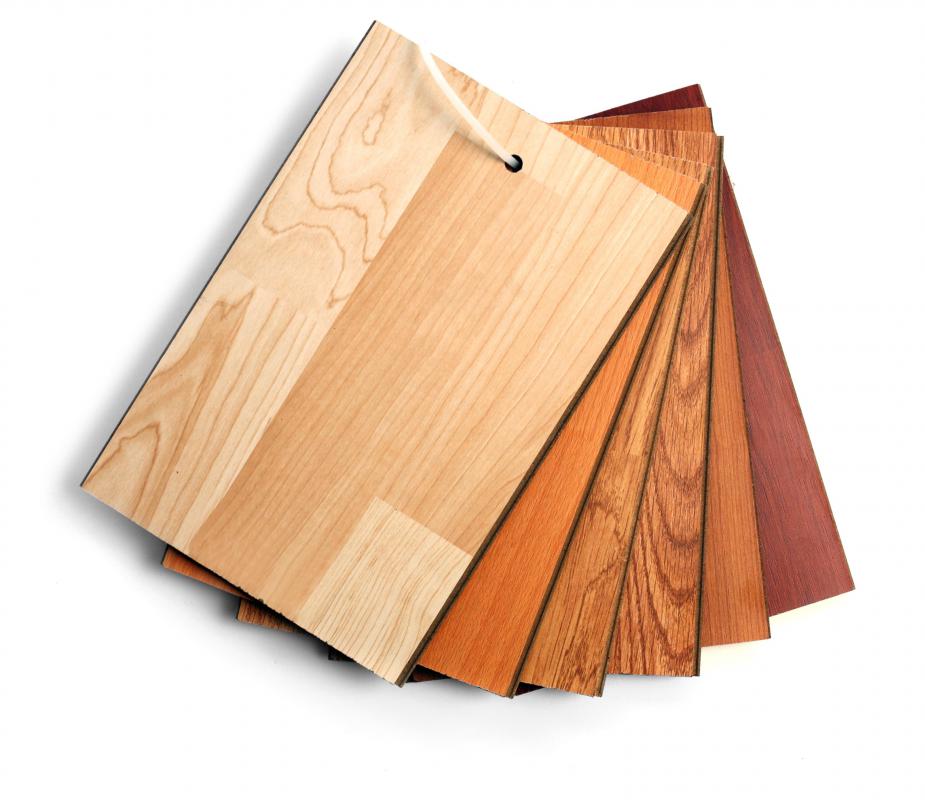At WiseGEEK, we're committed to delivering accurate, trustworthy information. Our expert-authored content is rigorously fact-checked and sourced from credible authorities. Discover how we uphold the highest standards in providing you with reliable knowledge.
What are Some Good Materials for a Basement Floor?
One of the challenges that homeowners face when making the basement into living space is the basement floor. The bare concrete is usually rough and not conducive to creating a warm and welcoming environment. Fortunately, there are several ways to install basement flooring that will be practical and visually appealing without the need to make major structural changes. Here are some ideas that will help make basement floors become inviting and comfortable.
In most basements, moisture is a common issue. When it comes to the installation of a basement floor, there is a need to address the issue before any type of flooring is settled upon. The easiest way to minimize moisture in the basement is to apply a coat of a watertight sealant to the walls and floor. In some locations, the installation of a sup pump to help drain off excess moisture seepage from the surround ground may also be necessary. Only once the moisture issue is under control should the homeowner proceed with installing some kind of basement floor over the existing concrete.

After sealing the concrete, it is still often a good idea to lay down a layer of some type of waterproof insulation on the bare floor. Next, install sheets of plywood over the insulation. This will not only provide another barrier to moisture and mildew, but also help to make it easier to walk across the floor without putting additional stress on the legs.

With the floor properly prepared, it is time to begin considering different basement floor options. One durable flooring option is tile. The tile will adhere to the plywood with the greatest of ease and provide a simple way to bring color into the space. Best of all, it is possible to replace soiled or damaged tiles with relative ease. This makes tile a good fit for the area if the basement will see a lot of traffic.

Along with tile, a laminate wood floor is also a viable option. The laminate will also be somewhat resistant to moisture and will also work well with the combination of the insulation and plywood. Many types of laminate flooring have a design that includes a simple tongue in groove configuration. The sections snap together with ease and make it possible to install the basement floor quickly. As an added bonus, the laminate floor requires nothing more than routine cleaning to look fresh for many years.

Linoleum flooring for basement floors is a third way to go. The large rolls of linoleum can be rolled out and secured in place using carpet tacks. While not as durable as tile or laminate, linoleum is often a less expensive option for basement floor covering. If the traffic to the basement is somewhat limited, the linoleum will last for an equitable period of time.

Finally, there is the option of covering the basement floor with carpet. In climates where controlling the humidity of the space is relatively easy, carpeting often works very well. However, if humidity is a constant problem, it is only a matter of time before the underlying padding begins to mildew. The end result will be a constant odor that will remind everyone of a wet dog in the house. Only go with carpeting if you are certain that the humidity level can be consistently controlled and that a buildup of mold and mildew under the carpet is not likely.
AS FEATURED ON:
AS FEATURED ON:
















Discussion Comments
@fBoyle-- I think they are waterproof, I believe most are. You may even be able to find plywood that's waterproof.
But if you have a serious moisture or condensation problem, then you should consider waterproof sealing and or some kind of insulation material underneath the laminate or plywood. We do have insulation foam underneath ours that's waterproof. It's to protect against mildew, which forms because of moisture and lack of ventilation.
Plus, basements are so cold that you will want another layer of material to save money on heating and cooling.
@candyquilt-- Are they waterproof? Or do they react to water at all?
I've heard that moisture and humidity can be an issue in basements and wood and plastic can react badly if they are not waterproof. I do love natural woof flooring. I don't think that laminate or any other material compares to it in terms of color, appearance and texture. But I certainly don't want a material that's going to lose shape or react to moisture or water.
We have laminate flooring on our basement and we're very happy with it. They were the more affordable option for us and I like that they look fancy unlike their price. They're also easy to clean and look very nice. I do recommend them. And I think they keep the floors warmer too.
Post your comments